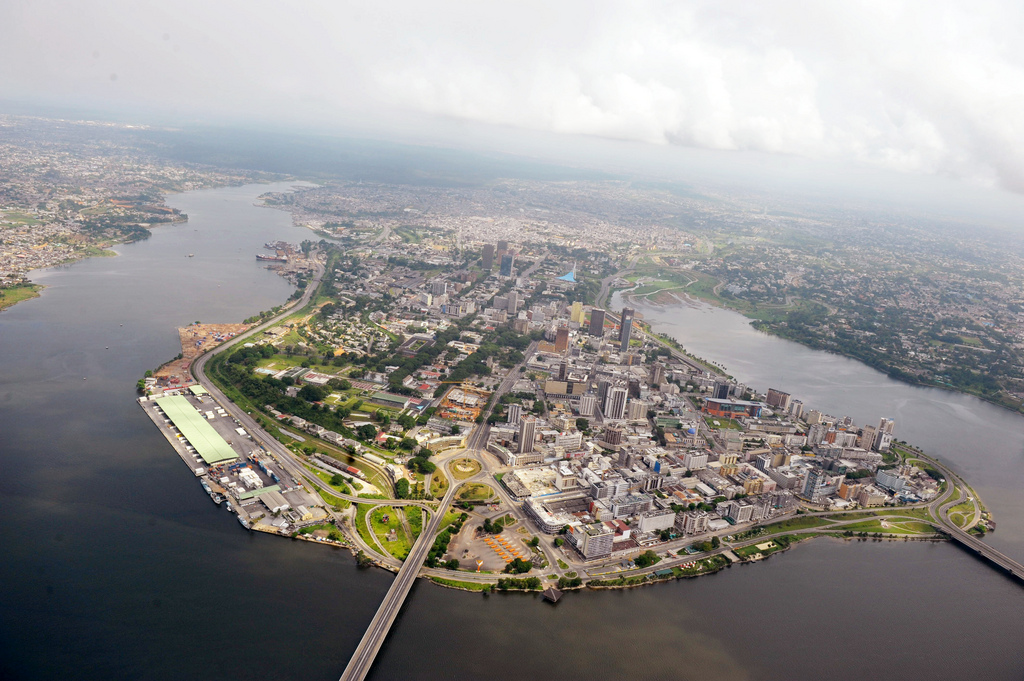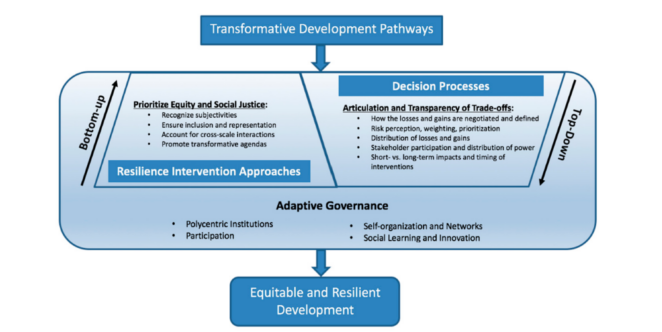Transforming Development and Disaster Risk

Summary
Development and disaster risk are closely linked because the people and assets exposed to risk, as well as their vulnerability and capacity, are largely determined by development processes. Transformation of this space is key to moving from current development patterns that increase, create or unfairly distribute risks, to forms of development that are equitable, resilient and sustainable.
This article* focuses on the complex relationship between development and disaster risk. Based on a review of existing literature, the authors present three opportunities that have the potential to lead to transformation in the development-disaster risk relationship:
- exposing development-disaster risk trade-offs in development policy and decision-making;
- prioritizing equity and social justice in approaches to secure resilience; and
- enabling transformation through adaptive governance.
This research aims to contribute to breaking down existing barriers in research, policy and practice between the disaster risk reduction, climate change adaptation, and development communities by providing cross-sectoral opportunities to operationalize theoretical knowledge on transformation. It also helps to clarify the connections between different global agendas by positioning transformation as a potential bridging concept to link disconnected policy processes.
This paper argues for empirical research to test the opportunities presented here and further define transformative pathways at multiple scales.
This article was published in a special issue of the journal Sustainability, titled Transforming Development and Disaster Risk, on 7 May 2018.
*The full Open Access paper is available to download from the right hand column. Extracts from the text are provided below.
Methods and Tools

While the body of research on transformation in complex systems has grown considerably in recent years, transformation remains somewhat abstract when considering the objective of transforming development and DRR policy and practice. The challenge is shaping and defining transformative pathways and action for development and DRR communities of practice. While additional research is needed to further develop the conceptual underpinnings of transformation, attention must also be paid to ensuring this knowledge is translated into action. There is currently a gap in identifying clear, practical entry points for transforming the relationship between development and disaster risk.
To help address this gap, the authors conducted three further literature reviews to identify three opportunities that have the potential to lead to transformation: (1) exposing development-disaster risk trade-offs in development policy and decision-making; (2) prioritizing equity and social justice in approaches to secure resilience; and (3) enabling transformation through adaptive governance. Figure 1 presents a conceptual framework of these three opportunities and how they relate to one another.
Conclusions and ways forward
As a boundary concept, ‘transformation’ is useful for challenging dominant values and goals in current development practice, examining the underlying failures of development and DRR, and calling for radical policy changes that support a move towards equitable, resilient and sustainable development trajectories.
This paper outlines three operational opportunities for realizing such transformations, and which present ways forward that bring together communities of practice in the development, DRR, and climate change adaptation sectors:
- via analysis of the trade-offs that are associated with development or DRR decision making;
- through an explicit focus on securing equitable resilience through development or DRR interventions; and
- through the application of adaptive governance to transform development and DRR systems.
Identifying such multi-stakeholder and cross-sectoral opportunities for transformation can help clarify the connections between different global policies and frameworks associated with these respective communities of practice, including the Sustainable Development Goals, the Sendai Framework, and the Paris Agreement. Defining and operationalizing transformative pathways allows the potential contributions from different sectors and policy arenas to be identified and negotiated, positioning transformation as a binding concept that can link often disjointed development, DRR, and adaptation actors and policy processes.
A multi-disciplinary research agenda, as outlined in the paper, can help to ensure successful outcomes of the Sendai Framework and refocus development and risk reduction efforts towards support for those most vulnerable to disaster risks.
Many observers are of the view that more radical, transformative changes in policy and decision-making are necessary to address the complex challenges that are changing our world. However, empirical evidence of transformation in action is urgently needed to create the basis for guidance on processes that would lead to a substantial reduction in disaster-related losses and damages.
Further research that focuses on testing and refining the opportunities presented in this paper, among others, is urgently needed to enhance understanding of what types of transformations are possible and how they may be achieved in practice.
Suggested citation
Thomalla, F., Boyland, M., Johnson, K., Ensor, J., Tuhkanen, H., Gerger Swartling, Å., Han, G., Forrester, J., Wahl, D., 2018. Transforming Development and Disaster Risk. Sustainability 10, 1458. https://doi.org/10.3390/su10051458
Related resources
- See the paper online in 'Sustainability'
- Find out more about the SEI Initiative on Transforming Development and Disaster Risk
- Read a typology framework for trade-offs in development and disaster risk reduction: a case study of Typhoon Haiyan recovery
- Read: 'The Sendai Framework: A catalyst for the transformation of disaster risk reduction through adaptive governance?'
- Read about transforming disaster risk reduction for more inclusive, equitable and sustainable development
- Read about bringing rights into resilience: revealing complexities of climate risks and social conflict
(0) Comments
There is no content